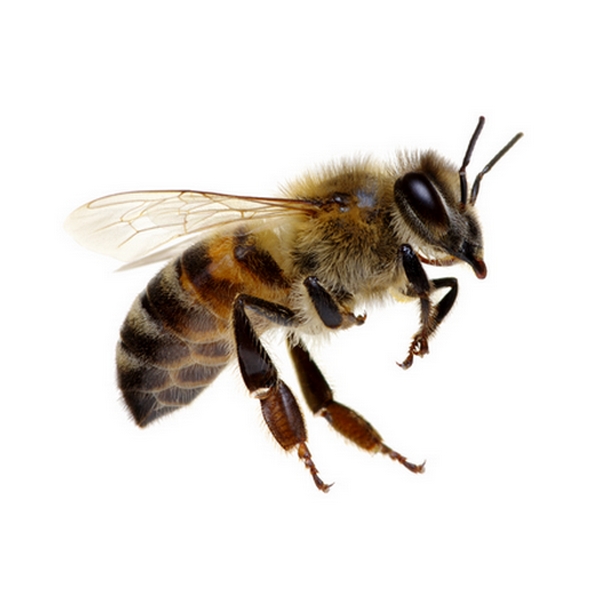
Bee venom is produced using specialized glands that worker and queen bees have. The latter uses its venom to get rid of its rivals at birth. Indeed, when a new queen hatches, there are in fact several royal cells that exist, and at birth, there is a Koh Lanta between the potential future sovereigns resulting in the victory of a single larva which will be destined to be queen. Furthermore, the workers use venom to defend the colony, but when they bite a threat, they die along with their sting. This shows that in case of danger, the bees do not apply the policies of the other hive! On the other hand, fortunately for her, the queen has a smoother stinger which does not remain attached to her victims (it would still be stupid if the larvae all killed each other to become queen...).
This article was updated on 12/12/2023How to use bee venom?
Bee venom therapy is not recognized as official medicine despite its effectiveness. In this treatment, the practitioner (often a specialized naturopath) will place several bees on the area to be treated. Each sting then injects 0.1 to 0.5 mg of venom or apitoxin. The number of injections (the dosage) varies from 2 to around thirty per session while the duration of the treatment can be from a single session to a much longer period, at a rate of 2 sessions per week. Note here that the lethal dose of venom is on average around twenty stings per kg of weight for an adult, or around 1,300 stings for a subject weighing 65 kg, so there is little fatal risk for the subject. However, everyone is sensitive to bee venom differently: the sting can cause a widespread local reaction in 10% of subjects, which can last up to 24-48 hours, and in 1% of cases there can be a generalized but benign reaction. . Some cases of severe reactions have been reported, in hypersensitive people, linked to anaphylactic shock (i.e. a violent allergic reaction), and this is why this therapy must be highly controlled and practiced by an experienced therapist.
In addition, for better effectiveness, the injections are generally done on the acupuncture points, and we speak ofapipuncture. However, if you have read this guide carefully, you should know that when the bee stings, it leaves its abdomen there and dies. This method was therefore a bit barbaric and sacrificial, so much so that to avoid this fatal outcome, techniques were developed to recover the venom from living bees, without killing them. The venom is then placed in syringes which will be used by the therapist, but unfortunately it loses some of its properties this way.
Composition
The composition of bee venom varies depending on the breed, age and food of the bee. It is made up of 85% water, and the rest is composed of:
- of the mellitin (50% of dry weight): it is a peptide partly responsible for the pain linked to the sting
- of the enzymes (phosphatases and hyaluronidases) (15% dry weight of the venom): these are powerful allergens whose action is potentiated by mellitin, causing the pain but also the benefits of the venom
- of the amino acids (11 à 15 %)
- of the carbohydrates (1 à 2 %)
- of the'apamin (2.5 to 3%): it is a neurotoxicant of the central nervous system, also anti-inflammatory
- of the'adolapine (1%), an anti-inflammatory and analgesic
- of the phospholipids and cathecolamines
Properties
To understand the properties of bee venom, we must first look at the body's reaction in the event of a sting: in this situation, the reaction can range from simple pain, heat, redness, and edema. , has a anaphylactic shock, a very strong allergic reaction which requires emergency treatment.
In apitherapy, bee venom is voluntarily injected into the area to be treated, seeking its action anti-inflammatory and analgesic, particularly to treat rheumatism. This effect is lasting over time and proportional to the quantity of venom injected. To put it simply, the mellitin would be an anti-inflammatory 100 times more powerful than hydrocortisone, and, combined with other venom molecules, it causes a global anti-inflammatory action and is more than effective in treating joints. In addition, the venom is also cardiotonic, immuno-stimulating and anticoagulant!
Indications
Classically, bee venom is used in the treatment of joint pain associated with arthritis, tendonitis, rheumatism, neuritis, neuralgia, and in general with all pain of inflammatory origin.
Furthermore, more recently, very in-depth studies have shown the benefit of bee venom for treating multiple sclerosis, an autoimmune disorder of the central nervous system characterized by lesional plaques and nerve disorders. Its effectiveness in this context seems remarkable and promising, but remains very controversial...
Attention however, this therapy can be dangerous, and people with allergies are very sensitive. Choose your therapist wisely! Someone who does not suggest you do an allergy test before starting treatment and who does not have adrenaline (the immediate antidote in the event of anaphylactic shock) in his office does not seem very serious...
Was this article helpful to you?
Average grade: 4.8 ( 644 votes)
Bibliography
Work : Cherbuliez, T., Domerego, R. (2003). Apitherapy - Bee medicine. Amyris Editions.
Work : April, G. (2014). Natural health with apitherapy: Honey, propolis, pollen, royal jelly... Éditions Terre vivant.
Work : Domerego, R., Imbert, G., & Blanchard, C. (2016). Practical guide to bee medicine: honey, pollen, propolis, royal jelly... on a daily basis. Baroch Editions.


